Our team has found the legendary Lake Huron "treasure" ship Keystone State. We found her by accident far out in the lake and miles away from where she was last sighted. We worked closely with Bob McGreevy and exchanged viewpoints on her demise.
Jared
The Civil War Era Side-wheel Steamer Keystone State has been discovered in Lake Huron by veteran shipwreck hunter, David Trotter, who has amassed roughly 100 shipwreck discoveries over the past 30 years. She was rumored to be carrying gold and war materials meant for the Civil War. The loss of the Keystone State was one of the most vexing mysteries on the Great Lakes, and her discovery seems to create as many mysteries as it has solved.
The 288’ Keystone State was the second largest ship on the Great Lakes when she was launched in 1849 and is one of the largest side-wheel steamer to “go missing” in the Great Lakes. The disappearance of the vessel and her crew of 33 was a significant tragedy, but the story of her loss was overshadowed by news of the Civil War, which had started just months earlier.
David Trotter, who resides in Canton, Michigan, has spent decades on the Great Lakes searching for and discovering shipwrecks, and is one of the most successful Great Lakes shipwreck hunters. “The Great Lakes contain some of the best preserved shipwrecks on the planet”, Trotter says, “the wreck sites are really underwater time capsules, ice-water museums, if you will….a swim back into time.”
The Keystone State was one of the most luxurious and opulent vessels of her day. She was built for the passenger and package cargo trade, running regular routes from Buffalo to Chicago and Milwaukee. During her heyday, she was called a “Palace Steamer” and vessels of her type were instrumental in early America’s expansion westward.
At the end of the 1861 shipping season, the Keystone State was loaded in Detroit, with a cargo described as “iron implements (farm implements)”. Her destination was reported to be Milwaukee, Wisconsin. Some experts believe the cargo was actually military supplies destined for Civil War battlefields and these items were deliberately mislabeled to hide the true nature of the cargo manifest from Confederate spies.
Departing on November 8th, 1861, under the command of Captain Travers, she moved up the St. Claire River into Lake Huron, and into a furious gale. The Keystone State was reported to have been last seen off Port Austin, near the tip of Michigan’s thumb area, “experiencing rough water and rolling heavily in the trough of a tremendous sea, apparently in a disabled condition”. Perhaps most troubling is the fact she left Detroit for Milwaukee promptly, without lifeboats.
A Detroit Free Press article, dated November 27, 1861 describes the tragedy:
“Bad as is the conviction, it is forced upon us that the Keystone State has been swamped in a gale on Lake Huron, and all on onboard have found watery graves. But how it happened, or what were the incidents of that terrible disaster, we shall probably never know. This is one of the saddest in all the annals of lake disasters. There is something particularly mournful in the fact that not one escaped to tell the story. All sank into a watery grave, and the only record of their fate is the floating fragments of the wreck.”
Trotter explains: “We now know that within the next 36 hours, on November 9th/10th, the Keystone State and her crew of 33 sailed into oblivion. It was more than a week later before the first evidence of the Keystone State loss was located; this only added to the mystery of her disappearance. The stories of the ‘mislabeled’ cargo (possibly military supplies/gold bullion-coins) began circulating immediately”.
The location of the Keystone State has been a mystery for over 150 years. With her location confirmed, divers have extensively explored the wreck, shooting underwater video and documenting the wreck site.
Trotter tours the Great Lakes Region yearly, sharing information gathered during the shipwreck exploration phase of the documentation process. The program on the Keystone State disaster is entitled “Desperate Voyage”. He also shares information on his website: www.shipwreck1.com.
“Because of the depth of the wreck site and the remoteness of the area where the ship foundered, exploring and documenting the wreck site takes some time and effort. Of course, one always wonders if the story of the gold bullion/coins is true, and perhaps we eventually will make that ‘one of a kind’ discovery.What would have been a few thousand dollars’ worth of gold coins during the Civil War would have much greater value today.
When asked about the possibility of discovering gold, Trotter smiles and says: “We still have some exploring to do in the large debris field”.
###
YouTube Video on the Keystone State: DESPERATE VOYAGE - YouTube
For further information, contact: David Trotter
DLTrotter@msn.com
(734) 455-7585
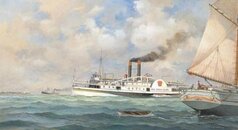
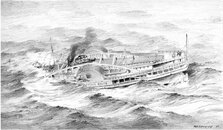
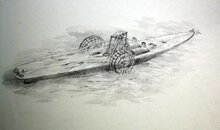
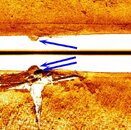
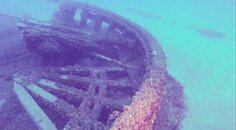
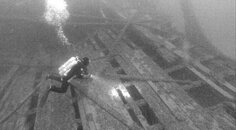
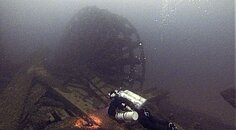
Jared
Civil War Era Shipwreck Rumored to be Carrying Gold Discovered in Lake Huron
The 288’ Keystone State was the second largest ship on the Great Lakes when she was launched in 1849 and is one of the largest side-wheel steamer to “go missing” in the Great Lakes. The disappearance of the vessel and her crew of 33 was a significant tragedy, but the story of her loss was overshadowed by news of the Civil War, which had started just months earlier.
David Trotter, who resides in Canton, Michigan, has spent decades on the Great Lakes searching for and discovering shipwrecks, and is one of the most successful Great Lakes shipwreck hunters. “The Great Lakes contain some of the best preserved shipwrecks on the planet”, Trotter says, “the wreck sites are really underwater time capsules, ice-water museums, if you will….a swim back into time.”
The Keystone State was one of the most luxurious and opulent vessels of her day. She was built for the passenger and package cargo trade, running regular routes from Buffalo to Chicago and Milwaukee. During her heyday, she was called a “Palace Steamer” and vessels of her type were instrumental in early America’s expansion westward.
At the end of the 1861 shipping season, the Keystone State was loaded in Detroit, with a cargo described as “iron implements (farm implements)”. Her destination was reported to be Milwaukee, Wisconsin. Some experts believe the cargo was actually military supplies destined for Civil War battlefields and these items were deliberately mislabeled to hide the true nature of the cargo manifest from Confederate spies.
Departing on November 8th, 1861, under the command of Captain Travers, she moved up the St. Claire River into Lake Huron, and into a furious gale. The Keystone State was reported to have been last seen off Port Austin, near the tip of Michigan’s thumb area, “experiencing rough water and rolling heavily in the trough of a tremendous sea, apparently in a disabled condition”. Perhaps most troubling is the fact she left Detroit for Milwaukee promptly, without lifeboats.
A Detroit Free Press article, dated November 27, 1861 describes the tragedy:
“Bad as is the conviction, it is forced upon us that the Keystone State has been swamped in a gale on Lake Huron, and all on onboard have found watery graves. But how it happened, or what were the incidents of that terrible disaster, we shall probably never know. This is one of the saddest in all the annals of lake disasters. There is something particularly mournful in the fact that not one escaped to tell the story. All sank into a watery grave, and the only record of their fate is the floating fragments of the wreck.”
Trotter explains: “We now know that within the next 36 hours, on November 9th/10th, the Keystone State and her crew of 33 sailed into oblivion. It was more than a week later before the first evidence of the Keystone State loss was located; this only added to the mystery of her disappearance. The stories of the ‘mislabeled’ cargo (possibly military supplies/gold bullion-coins) began circulating immediately”.
The location of the Keystone State has been a mystery for over 150 years. With her location confirmed, divers have extensively explored the wreck, shooting underwater video and documenting the wreck site.
Trotter tours the Great Lakes Region yearly, sharing information gathered during the shipwreck exploration phase of the documentation process. The program on the Keystone State disaster is entitled “Desperate Voyage”. He also shares information on his website: www.shipwreck1.com.
“Because of the depth of the wreck site and the remoteness of the area where the ship foundered, exploring and documenting the wreck site takes some time and effort. Of course, one always wonders if the story of the gold bullion/coins is true, and perhaps we eventually will make that ‘one of a kind’ discovery.What would have been a few thousand dollars’ worth of gold coins during the Civil War would have much greater value today.
When asked about the possibility of discovering gold, Trotter smiles and says: “We still have some exploring to do in the large debris field”.
###
YouTube Video on the Keystone State: DESPERATE VOYAGE - YouTube
For further information, contact: David Trotter
DLTrotter@msn.com
(734) 455-7585











